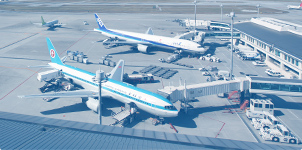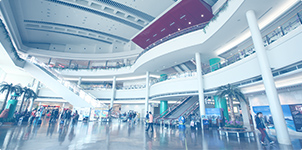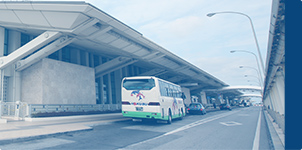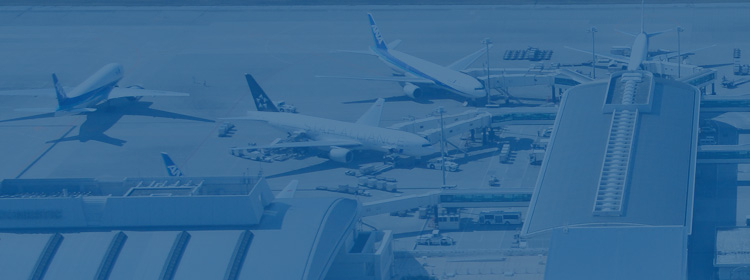Naha Airport passenger Terminal building will implement efforts to reduce CO2 emissions for the realization of an environmentally friendly airport (Eco Airport), which is being tackled in the country (mlit).
Power saving measures
In 2004, this building was designated as the first designated plant in the Energy Conservation Act (Act on rationalization of the use of energies), and we have been working on the power saving measures of each part in accordance with the designation.
1. Measures to conserve electricity such as lighting equipment
- Turn off indirect lighting in each lobby
- Change of off time of each lobby aisle
- Change the lighting time of each vending machine and internal light
- Changed to LED lighting such as the Welcome hall and various fluorescent lamps.
- Automatic off by the sense of person sensor of the staff toilet
- Thinning off of each lobby
2. Measures to conserve electricity for air conditioning equipment
- Air conditioning temperature setting of each office and lobby, etc. 25 ℃ -25.5 changed to ℃
- Limited operation and partial suspension of multiple air conditioners
- Optimization of operating time for air conditioners and exhaust systems
- Change of air intake time for each air conditioner (reduce the amount of outside air by installing a timer)
3. Other measures to conserve electricity
- Received energy saving diagnosis of the foundation
- Thermal insulation construction of plate heat exchanger for cold water
- Started energy management by BEMs
- BEMs implementation Support Project to update the central monitoring system
- Updated construction of heat source equipment under the energy use rationalization business support business
Water saving measures
The building actively captures and processes the available water, ensures the water quality that is available, and uses it as a cleaning water for toilets.
1. Water supply measures
- Use foam caps to reduce the amount of water used in each toilet.
- Reduce the amount of water supply used in the toilet for the staff.
- Measures to minimize the use of water supply to clean toilets
2. Toilet Cleaning Water facilities
- Medium Water treatment equipment (kitchen exclusion treatment equipment, miscellaneous wastewater treatment facilities)
The kitchen exclusion processing equipment is used as the washing water of the toilet by treating the drainage which is comparatively good water discharged from the kitchen of the tenant.
Wastewater treatment facilities are used as washing water for toilets by treating the relatively good water drainage from toilet wash water and sink. - Potable Filtration Equipment
Used as washing water for toilets by intake and filtration of underground water of 150 meters underground - Use of water supply
The washing water of the toilet uses the medium water treatment water, the potable treatment water, and the rainwater treatment water, and if it is not enough, tap
3. Measures to conserve water supply in the future
- Utilization of recycled water treatment water in the prefecture
Water is used for toilet chores in order to reduce the use of water supply, the use of recycled wastewater as the cleaning water in the toilet is used to reduce water supply and to reduce the amount of rainwater treatment by using it in highly processed coolant water.
Energy savings through the use of State subsidies
About the state subsidy
The building was completed in 1999, but it was designated as a designated energy management plant, and it was necessary to reduce energy, and the facility was renovated to enable energy management. As a result, it became possible to apply for the state subsidy in the energy management renovation, and applied for the following state subsidy.
Contents of the Support business
1.Applied for the “Project Expense for Introduction of Highly Efficient Energy Systems into Dwelling/Building” (Project on BEMS Introduction Support) in 2006.
- Replacing The Energy Management Software of The Central Monitor Device.
- Inverting of Second Cold Water Pump
- Addition of Lighting Controls
2.Applied for The Project Expenses on BEMS Repair Construction for The 2011 and 2012 Fiscal Years.
- Renewal Construction of The Central Monitor Device
- Renewal of Heat Pump Sequencer
- Inverting of Primary Cooling Pump
- Inverted The Air-Conditioners
3.Apply for energy use streamlined business owner support services by the 2013 fiscal year to 2014 year multi-year
- Update of the heat source equipment
4.2015 supplementary budget small and medium-sized energy-saving and productivity revolution investment promotion business expense subsidy of a company or the like
- Energy-saving project by the Domestic Passenger Terminal Building LED lighting introduced
5.2017 fiscal year energy use rationalization business owner support services Ⅱ. Facilities Unit (grant decision)
- Energy saving business of domestic passenger terminal building (the introduction of high-efficiency lighting)
Long-term planning
In order to continuously tackle environmental measures, the building will continue to strive to harmonize the business and the environment in accordance with the following plan.
1. Long-term plan for power saving measures
- Initiatives to update lighting equipment to LED
Reduction of CO2 by promoting led of each lobby, etc. - Update to equipment that contributes to high efficiency and energy reduction of equipment
Considering the introduction of high-efficiency equipment and equipment that can contribute to the reduction of CO2 emissions at the time of renewal of equipment - Efforts to install renewable energy
2. Long-term plan for water supply measures
- Utilization of recycled water treatment water in the prefecture
Water is used for toilet chores in order to reduce the use of water supply, the use of recycled wastewater as the cleaning water in the toilet is used to reduce water supply and to reduce the amount of rainwater treatment by using it in highly processed coolant water.
3. Long-term plan for subsidy utilization
- Use of subsidies when updating various equipment
For the renewal of various equipment, we will update it to the equipment of high efficiency and make the most of the subsidy.







